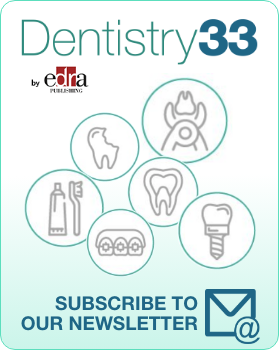
Eating disorders and oral-dental characteristics
There is no doubt, as amply demonstrated by the scientific literature, that mental and general health are closely linked. Eating disorders are defined as psychosomatic disorders, associated with abnormal eating patterns, very reduced physical and psychosocial capabilities, suicidal tendencies and potentially fatal systemic complications. It should be specified that eating disorders also show some manifestations in the oral cavity, either directly or due to nutritional deficiencies.
These manifestations mainly include: tooth erosion, tooth decay, qualitative and quantitative changes in saliva (xerostomia and impaired buffering capacity), gingival and periodontal diseases and lesions of the oral mucosa (palatal erythema and ulcers). Previously conducted studies have suggested that The characteristics of eating disorders are evident in the oral cavity during the first 6 months of abnormal behavior. Therefore, an early and accurate diagnosis of this condition is crucial. Based on the DSM-5, eating disorders can be classified into anorexia nervosa (AN), bulimia nervosa (BN), binge eating disorder (BED), and other specific eating or eating disorders (Other Specified Feeding or Eating Disorders – OSFED).
A group of Indian researchers published an article on this topic in the Journal of Family Medicine and Primary Care.
Anorexia nervosa is identified primarily by weight loss and restriction of food intake. Anorexia is a complex disorder and leads to a decrease in self-esteem and susceptibility to addictive behaviors (narcotics, alcohol, tobacco, sugar, soft drinks, endurance sports, etc.).
Bulimia nervosa is identified by initial overeating followed by the adoption of inappropriate compensatory practices, such as self-inflicted vomiting, excessive intake of laxatives and strenuous exercise. The gag reflex is usually induced by the fingers, leading to the development of callus on their part dorsal (known as Russell's sign). Eating disorders have a gender predilection, as they are mainly observed in adolescent women, with an average age of onset being 16 and 25 years for anorexia and bulimia respectively. Anorexia primarily affects individuals from the middle to upper classes, unlike bulimia which affects individuals from all socio-economic strata.
Eating disorders are often accompanied by a wide range of comorbid conditions such as cardiovascular disease, endocrine system dysfunction, gastrointestinal, pulmonary and musculoskeletal disorders. The impact of comorbid conditions is influenced by the age of the patient, the duration of the period of irrational eating, and the speed and severity of weight loss.
The precise etiopathogenesis of eating disorders is not completely known, although a wide range of factors (biological and socio-psychological) play an essential role. However, the main factor in the genesis and development of eating disorders remains low self-esteem together with the fact that the subject does not like their physical appearance. Some people may also have a genetic predisposition.
The first signs of the presence of disorders are found mainly in or around the oral cavity. Therefore, oral health professionals may be the first to encounter patients with undiagnosed eating disorders.
Oral signs and symptoms of eating disorders are usually due to nutritional deficiencies or a long history of self-induced vomiting. However, improper personal hygiene, inconsistent eating patterns and particular medications can worsen the condition. Literature has shown that dental erosion is the main and most common oral feature of eating disorders. Dental erosion is described as the gradual and irreversible destruction of calcified tooth structure, caused by chemical and non-bacterial action, and is associated with greater dentin sensitivity.
The presence of cavities is another of the important manifestations in eating disorders. Dental caries – as is widely known – usually has a multifactorial etiology and, therefore, its presence cannot be attributed exclusively to eating disorders. However, the carious lesions observed in patients with eating disorders present peculiar characteristics, such as localization ( cervical caries) and the presence of leathery dentinal lesions with large areas of weakened enamel.
Eating disorders also have repercussions on the salivary glands. Sialadenosis is considered a chronic manifestation in patients with eating disorders, most commonly observed in patients suffering from bulimia. Sialadenosis is often described as a relapsing, bilateral, asymptomatic, noninflammatory, nonneoplastic enlargement of the salivary glands that does not affect the functioning of the gland and appears to be caused by peripheral autonomic neuropathy.
An acute manifestation, especially in bulimic subjects, affecting the salivary glands is necrotizing sialometaplasia, defined as an inflammatory, self-limiting, necrotizing pathology that mainly affects the minor salivary glands of the hard palate.
Patients with eating disorders may then present quantitative changes in saliva, such as xerostomia, which refers to the subjective perception of dry mouth and is defined as a deficiency in the amount of saliva production and buffering capacity. The literature has demonstrated the effect of eating disorders also on the speed of salivary flow. A decrease in it, in fact, has been correlated with a greater predisposition to increased caries activity, opportunistic lesions of the mucosa (candidiasis infections) and taste alterations.
Patients suffering from eating disorders present alterations in the salivary composition also at a qualitative level. Bulimic subjects, in fact, present significantly higher quantities of amylase, which is correlated (by virtue of the lower pH than normal) to demineralisation of the enamel and the greater survival of acidogenic and cariogenic microbes (such as S. mutans).
Patients suffering from eating disorders experience taste alterations and hypogeusia, which may be related to the presence of fungal infections or palatal anomalies due to self-induced vomiting. It is possible that patients with eating disorders also present dysphagia (difficulty in swallowing) or the presence of sensation of globus (“lump in the throat”).
Obsessive-compulsive disorders, such as repetitive tooth brushing, chewing gum intake, and parafunctional nail biting (onychophagia), are also associated with eating disorders.
Patients with eating disorders are more susceptible to gingivitis and periodontitis, due to poor oral hygiene and nutritional deficiencies. Vitamin C deficiency, for example, can cause marginal gingivitis. Gum recession occurs primarily in adult patients, either due to traumatic brushing or ongoing acid attacks. Periodontal health can be further affected by a micronutrient deficiency (e.g. zinc, iron, selenium, calcium, copper and magnesium ).
Patients with eating disorders may present lesions of the oral mucosa, due to nutritional imbalances (vitamin and haematinic). It is common to find in bulimic subjects the presence of an erythematous palate and traumatic ulcerations of the soft palate and pharynx, due to chronic acid contact and repeated digital trauma. Also in patients suffering from bulimia, angular cheilitis (or cheilosis) may occur, whereby the corners of the mouth appear pale and macerated, due to a chronic candida infection.
Patients with eating disorders often report burning sensation or stomatodynia.
 Related articles
Related articles
Eating disorders (ED), such as Anorexia or Bulimia, are serious psycho-social illnesses that affect adults and adolescents mainly. Individuals affected by...
 Read more
Read more
Editorials 22 April 2024
If there were an indicator for change in music, this would be off the charts if it wanted to measure how many and what changes Miles Davis has made since, at eighteen, he was enlisted, almost by...
Editorials 22 April 2024
Center for Integrative Global Oral Health Brings Together Global Leaders to Advance Health Advocacy
Penn Dental Medicine’s Center for Integrative Global Oral Health (CIGOH) recently convened its Global Oral Health Forum II: Evidence to Advocacy, bringing together global leaders in health policy...
News 22 April 2024
Synchrony Expands Dental Payment Offerings with Adit Practice Management Software Partnership
Synchrony, a consumer financial services company, announced a new partnership with Adit, an industry leading dental practice management software provider. Increasingly, dentists are looking for...
We are thrilled to announce that Mary Beth Kirkpatrick, celebrated consultant and founder of Gaidge, has been honored with the 2024 Outstanding Contribution Award by the American Association of...
KLOwen Orthodontics continues to lead innovation in the orthodontic industry by launching at AAO, the only custom metal self-ligating (SL) solution available and a 2024 Ortho Innovator Honorable...











